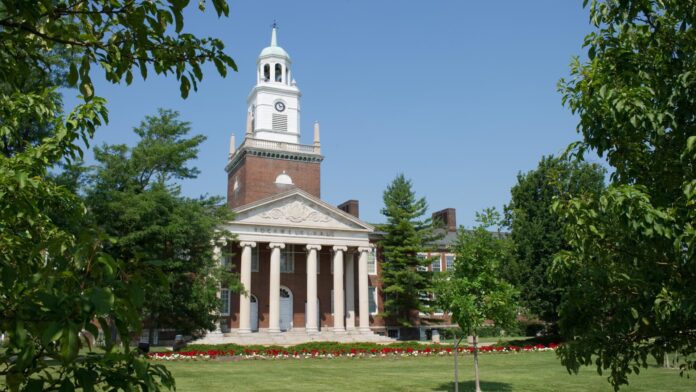Despite the fact that college enrollment has slid since the start of the Covid pandemic, many college students nonetheless need to get a level, and for some, free tuition programs are the one method to make greater training a actuality.
In 2017, the state of New York’s Excelsior Scholarship made headlines when it grew to become the primary within the nation to cowl 4 years of tuition with out being tethered to educational efficiency.
New York initially said greater than 940,000 college students with household incomes as much as $125,000 might qualify. New York’s program applies to all faculties on the Metropolis College of New York and State College of New York.
However as of the tip of this educational 12 months, just below 73,000 college students have acquired the scholarship enabling them to attend CUNY or SUNY tuition-free, in accordance with Angela Liotta, a spokeswoman for New York State Larger Training Providers Corp.
Extra from Private Finance:
Free college is now a reality in nearly 30 states
3 ways to avoid taking on too much student loan debt
Is college really worth it?
A separate research report discovered that of first-year CUNY undergraduates, solely about 25% of eligible college students are Excelsior recipients and the lowest-income college students are most probably unnoticed.
Roughly two-thirds, or 68%, of program {dollars} stream to college students with incomes at or above $70,000, in accordance with Judith Scott-Clayton, a professor of economics and training at Columbia College’s Lecturers Faculty and an creator of the report.
The applying course of — “the hoops and hurdles and the advantageous print” — could also be a barrier, she mentioned.
“There nonetheless aren’t many college students at CUNY which are getting this award,” Scott-Clayton mentioned. “That was shocking.”
And much more college students who might qualify at no cost tuition aren’t going to varsity in any respect.
To make certain, the Covid pandemic has had a devastating impression on faculty enrollment nationwide.
As of the newest tally, the undergraduate pupil physique sank by practically 1.4 million college students, or 9.4%, since 2020, in accordance with the Nationwide Pupil Clearinghouse Analysis Heart.
Enrollment nosedive continues
“Faculty enrollment declines seem like worsening,” Doug Shapiro, the Nationwide Pupil Clearinghouse Analysis Heart’s government director, mentioned in an announcement when the newest faculty enrollment figures had been launched earlier this week.
Would-be faculty college students have rising considerations about paying for faculty and student debt and are questioning the worth of diploma, Shapiro mentioned.
Because the U.S. economic system provides extra jobs and wages rise, some are additionally opting to make the most of increased employment opportunities as an alternative.
Group faculties, which serve lower-income college students, have suffered probably the most, with enrollment sinking 7.8% this spring in contrast with a 12 months in the past — a decline of roughly 351,000 college students.
Free faculty applications are supposed to enhance enrollment and supply a pathway to the center class.
Despite the fact that the Biden administration’s plan to make group faculty tuition-free for 2 years stalled, the push at no cost faculty is forging forward in lots of elements of the nation.
Whereas the White Home has turned its focus to extending the student loan payment pause, states have been transferring ahead with plans to cross laws of their very own to make some faculty tuition-free.
Just lately, New Mexico Gov. Michelle Lujan Grisham, a Democrat, signed the New Mexico Alternative Scholarship Act, creating what now supersedes New York’s as probably the most in depth tuition-free scholarship program within the nation.
Different so-called promise applications sometimes provide faculty college students two years of free tuition at collaborating state group faculties or different affiliate diploma applications and vocational faculties.
Most, just like the Excelsior Scholarship, are what’s often known as “final greenback” scholarships, that means this system solely pays the quantity of tuition that’s not lined by present state or federal help. (President Joe Biden lately signed a spending invoice that included growing the sum of money offered by the federal authorities for Pell grants, successfully reducing the fee for states to implement free faculty applications.)
Not all consultants agree that free faculty is one of the best ways to fight the school affordability disaster.
Critics say lower-income college students, by way of a mixture of present grants and scholarships, already pay little in tuition to state faculties, if something in any respect.
Additional, most often the cash doesn’t cowl charges, books, or room and board, that are all prices that lower-income college students wrestle with, and diverting funds towards free tuition might come on the expense of different operations on campus, together with hiring and retaining school and directors.


